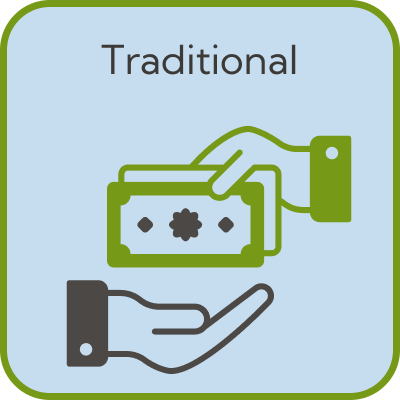Fundraise by participating in Self-organised pogo stick endurance challenge!
Self-organised pogo stick endurance challenge
Imagine bouncing your way to making a real difference with a self-organized pogo stick endurance challenge. This event is exactly as it sounds: you will test your endurance and skills on a pogo stick, hopping for a set duration or until you reach a predetermined goal, such as a number of jumps or a specific distance. This unique challenge not only puts your physical abilities to the test but also serves as an exciting way to engage donors and raise funds for a cause close to your heart.
Choosing a pogo stick challenge for charitable fundraising is a great idea because it stands out due to its uniqueness and fun element. People are naturally drawn to watching and supporting activities that are out of the ordinary, which means you can capture more attention and, consequently, potentially more donations. Additionally, the visual appeal of someone continually bouncing adds a playful component that is perfect for sharing across social media platforms, increasing the reach of your fundraising campaign.
To organize this event, start by setting a clear and achievable goal for your challenge, such as a target number of jumps or a time to keep bouncing. Ensure you have a suitable location that is safe and allows enough space for you to perform the challenge. It’s also essential to practice prior to the event to build your stamina and skill on the pogo stick. Engage with your community by promoting your challenge through social media, emails, and local community boards. Make sure to explain the cause you are supporting and how people can pledge or donate.
For your pogo stick endurance challenge, two Sponsivity challenge types are particularly suitable: the Time Challenge and the Distance Challenge. In a Time Challenge, sponsors can pledge donations based on how long you can keep bouncing, providing a motivational boost to keep you going for longer than you might in a typical scenario. On the other hand, a Distance Challenge could be an exciting alternative—if your pogo stick allows movement over distance—where donations could be based on how far you travel while bouncing.
Remember, the success of a fundraising event often hinges on how well you engage with your audience and sponsors. Use lively updates, live streams, and interactive posts during the event to keep donors invested in your progress. This way, you transform your physical endeavor into a shared journey that supporters are more likely to invest in, both emotionally and financially.

Sponsivity offers you several ways to raise for Self-organised pogo stick endurance challenge


💪 Physical Endurance – A Test of Strength & Stamina for Charity
Physical endurance challenges are some of the most demanding and rewarding ways to raise money for charity. These events push fundraisers to their limits, whether through long-distance running, cycling, swimming, or multi-hour challenges, making them highly compelling for donors. The harder the challenge, the more supporters are inspired to give.
Why Physical Endurance Works for Fundraising:
- High Engagement: Donors love to support fundraisers who commit to extreme endurance challenges, seeing their dedication as a strong reason to give.
- Scalable & Inclusive: Endurance events can range from personal step challenges to Ironman triathlons, making them accessible for all fitness levels.
- Long-Term Fundraising Potential: The extended training and preparation period allow fundraisers to build momentum and keep donors engaged.
- Great for Time & Distance Challenges: Fundraisers can challenge themselves to beat a time, achieve a distance, or push beyond their limits for charity.
Examples of Physical Endurance-Based Fundraisers:
- Marathon or Ultra Run: “Help me raise £2,000 as I take on my first 100K ultra-marathon!”
- Long-Distance Cycle Challenge: “I’m cycling 1,000 miles across the UK for charity—sponsor me per mile!”
- Extreme Fitness Challenge: “I’m doing 24 hours of non-stop exercise—every donation pushes me further!”
Physical endurance fundraisers inspire, challenge, and motivate, creating an unforgettable experience for participants and a powerful reason for supporters to donate.
Set bespoke rewards that suit physical endurance
- Playlist pick - any song of your choice repeated 3 times on my playlist!
- Photo eating your chosen race snack (max 50g!)
- 20 press-ups after the finishline
📅 Self-Organised – Fundraising on Your Terms
Self-organised fundraising challenges put you in control, allowing fundraisers to create a challenge that’s unique, personal, and tailored to their passions. Unlike organised events, self-organised challenges offer complete flexibility—whether it’s a solo endurance test, a creative personal challenge, or a community-driven activity.
Why Self-Organised Challenges Work for Fundraising:
- Full Flexibility: Choose the activity, location, and timing that works best for you, making fundraising accessible and achievable.
- Personal & Meaningful: Custom challenges allow fundraisers to connect with their audience by choosing something significant to them.
- Low-Cost & Inclusive: Without the need for event entry fees or logistics, anyone can participate, making it easy to involve family, friends, or colleagues.
- Perfect for Challenge Chain & Wager Models: Self-organised challenges can inspire others to join in, spreading the impact through viral nominations.
Examples of Self-Organised Fundraisers:
- Personal Running Challenge: “I’ll run 5K every day for a month—support my journey!”
- DIY Fitness Marathon: “I’m doing 1,000 push-ups in a day—every donation pushes me further!”
- Creative Challenge: “I’ll cycle across the country dressed as a superhero—help me hit my fundraising goal!”
Self-organised challenges allow fundraisers to turn their creativity, passions, and dedication into real impact, making it a powerful and accessible way to raise money for a cause.
Set bespoke rewards that suit self-organised event
- Rename the challenge in your honour
- Bring home-baked cookies to the finishline